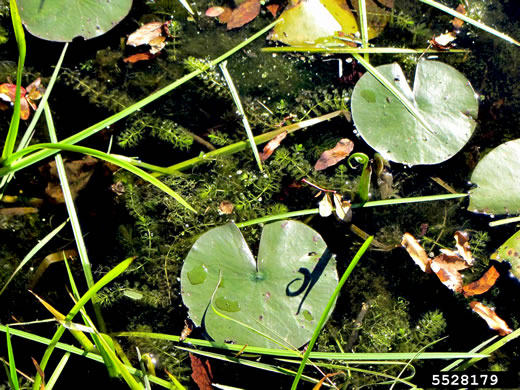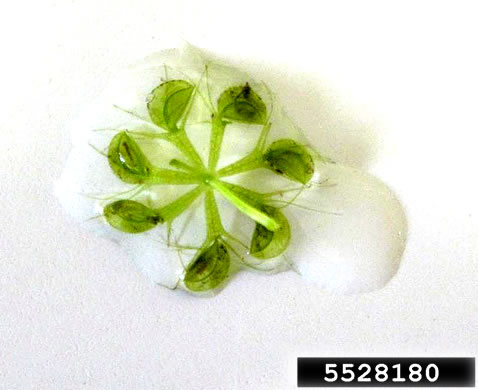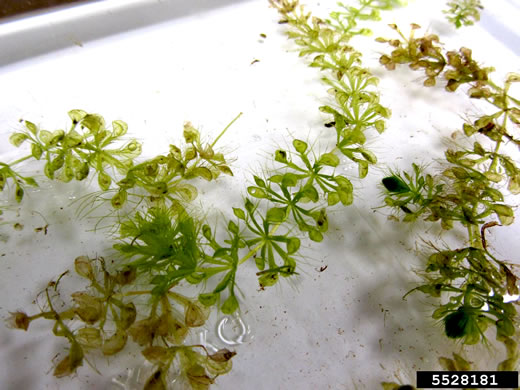Spermatophytes (seed plants): Angiosperms (flowering plants): Eudicots: Core Eudicots: Caryophyllales
WEAKLEY'S FLORA OF THE SOUTHEASTERN US (4/14/23):
Aldrovanda vesiculosa
FAMILY
Droseraceae
Go to FSUS key
Dig deeper at SERNEC, a consortium of southeastern herbaria.
Check out EDDMapS.org to see where this has been reported.
(?)
PLANTS NATIONAL DATABASE:
Aldrovanda vesiculosa
FAMILY
Droseraceae
SYNONYMOUS WITH Floristic Synthesis of North America. BONAP (Kartesz, 2021)
Aldrovanda vesiculosa
COMMON NAME:
Waterwheel-plant
To see larger pictures, click or hover over the thumbnails.
Chris Doyle, Allied Biological, Bugwood.org bug_5528179
Month Unknown Sussex County NJ
Stems 6-15cm, per Flora of China.
Chris Doyle, Allied Biological, Bugwood.org bug_5528180
Month Unknown Sussex County NJ
Leaf whorls 1-2cm in diam., bristles extending slightly beyond leaf blade, per Flora of China.
![]() COMPARE
aquatic plants
COMPARE
aquatic plants
Chris Doyle, Allied Biological, Bugwood.org bug_5528181
Month Unknown Sussex County NJ
Leaf segments rise on stimulation then close together to form a trap, per Flora of China.
WEAKLEY'S FLORA OF THE SOUTHEASTERN US (4/14/23):
Aldrovanda vesiculosa
FAMILY
Droseraceae
(?)
PLANTS NATIONAL DATABASE:
Aldrovanda vesiculosa
FAMILY
Droseraceae
SYNONYMOUS WITH
Floristic Synthesis of North America. BONAP (Kartesz, 2021)
Aldrovanda vesiculosa
If a search such as "Carex leptalea var. leptalea" doesn't deliver the results you want, try "Carex leptalea".
Or, to minimize chances of a misspelling, try just "Carex le".
Less is more: If "pencil flower" doesn't deliver the results you want, try "pencil".




